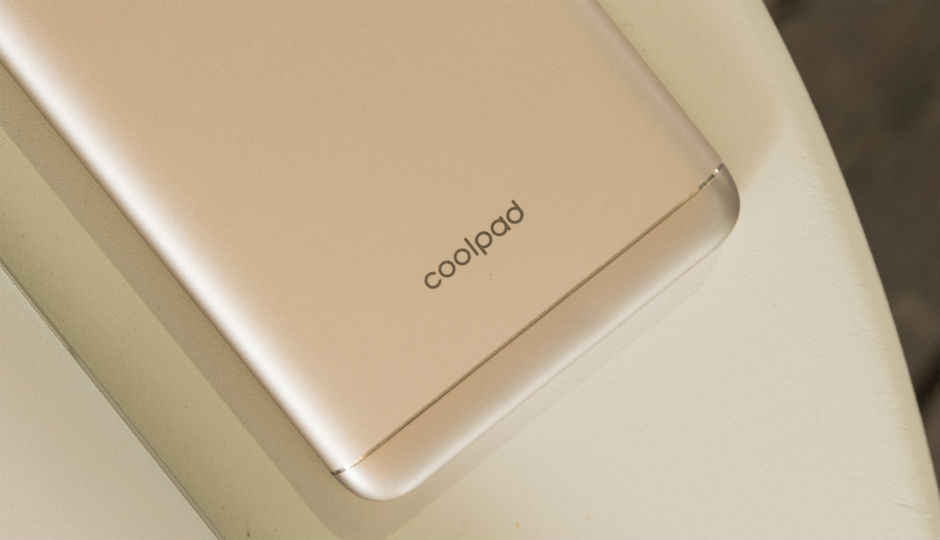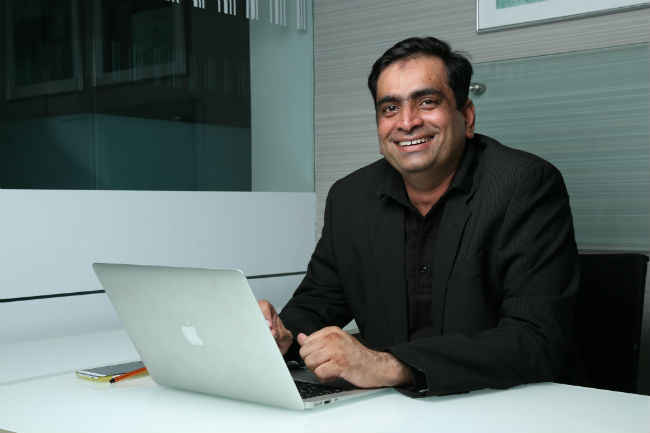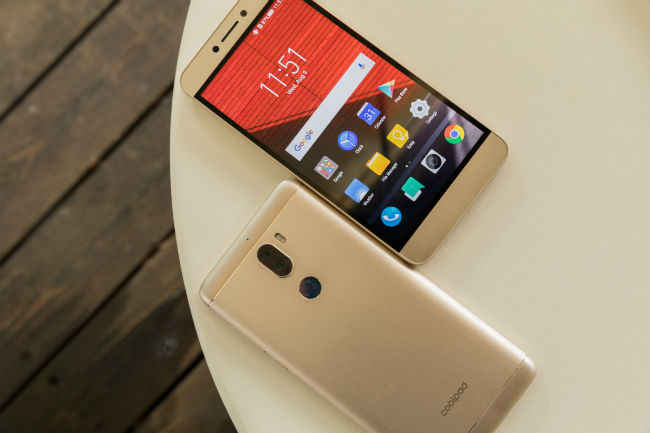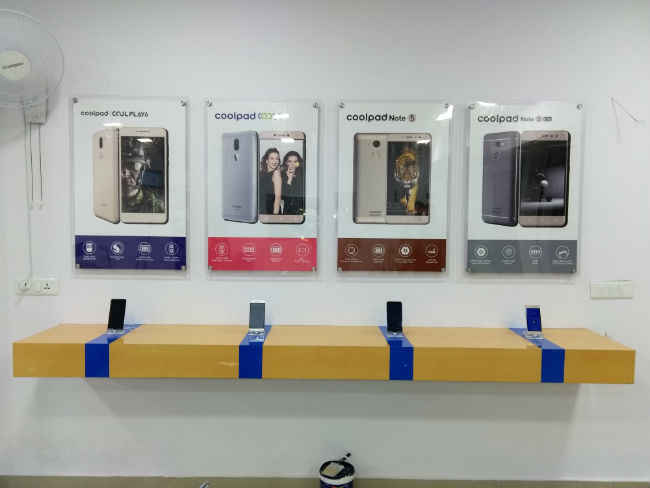Building a brand in India: Interview with Syed Tajuddin, CEO, Coolpad India
Coolpad's Syed Tajuddin says you can't think about making profits when you're building a brand. The company has spent the last two years doing just that in India.

Coolpad has routinely made waves in the Indian market with phones that punch above their weight. But, how can a company keep doing this in the long run? We sat down with Coolpad's India CEO, Syed Tajuddin, to find out and gain some more insights on how the smartphone market works in the country.
 Survey
SurveyThe Coolpad Play 6 has all the specs one wants, yet at a low price. How do you cut price to such low levels?
There are two ways to do that. The first is to see whether I can recover my hardware cost (BOM cost). Maybe I don’t want to recover my operational and marketing costs, then I can achieve (these low prices).
The second method is to look into our partners. Maybe partners will also cut down their operational costs and margins, especially on exclusive products, and we can together achieve the low prices.
Your cost for a product in India increases because of taxes etc. right? Does that not make it more difficult?
That’s supposed to happen, but when you take a closer look, there are certain tax rebates that you can take advantage of. If you’re able to manage these tax rebates properly, you can still achieve these low prices. For instance, if you get products here and consume them locally, there are different taxes. If you re-export it from here, the taxes change.
I can’t have competitive pricing for all products, but in selective products that can appeal to the masses, I should be able to do it.
I’m assuming the Play 6 is one of these selective products. Are these meant to add to your profits, or are they meant to create a fan base?
See, the Play 6 is not meant to drive traffic (volumes). It is meant to show the capacity of the brand, where the brand can establish itself in terms of technology, commercial pricing and market. When you look for mass products, for everyone it is the sub-10k segments. Everybody targets volumes in those segments. When you go to the 15k segments, nobody is banking on volumes, be it Samsung or anyone.
So, it won’t be a volume game, but it will help you position yourself. That you are in the same league as the big boys and you’re shaking them up, forcing them to correct prices. If you see the last two and a half years, whenever we’ve launched, others have had to rectify prices to almost match us. I always believed that selling in India is not just about selling our own products, but also to help the customer renegotiate prices with other brands.
But how long can you do this? How long can you keep cutting prices?
I agree. But, see as long as we’re running a brand, we have to keep positioning it (in a certain way). Yes, we can’t do this for every product, but occasionally we have to do it and we will keep doing it. Why should 6GB RAM be restricted to the elite classes only? If you propose a different combination (skew), consumers will surely be interested.
How has the response to the Play 6 been?
It’s been good. It’s always out of stock. The challenge now is with Chinese national holidays and Diwali around the corner, we have to keep stocks available.
When you have a good price and good product, the problem is always that the stocks are short. Nowadays, companies try to create temporary hype by showing that stocks are unavailable. We don’t do that. We sell products on open sale, and don’t try to play with customer psychology.
But when you have smaller stocks to start with, the lines between open sale and flash sale are being blurred. How does it matter?
See, when you’re selling products on flash sale, you’re hoarding the stocks. Even though you can provide products, you hold them and hoard the inventory. But the customer is paying me money, why should he have to wait? I should make products available as long as they are available in my stocks. Why should I make people wait in queues? Especially when you talk about products about 10k, nobody wants to wait.
In the online business, the first idea was that you would get products that you couldn’t get anywhere, online. But today people are going abroad and buying iPhones. There’s no reason to make them wait.
Since you mentioned the iPhone. Companies like Apple and Samsung always have their products in stock. You go online or offline and you can buy them anytime. Why does that not happen with Coolpad?
We had a supply issue this time, because of the holidays and some other concerns. For Coolpad, we usually keep products available. There’s a Diwali promotion happening right now, and we have stocks for every product that we’ve listed. I shouldn’t be short on stocks. If the product is good, customers are accepting it, why should I keep it out of stock?
Going back to prices, you said partners will cut costs, as will the company. So, ideally these products are being sold at a loss, right?
You cannot call it a loss. It is called a no profit scenario. Ideally if you see, loss for a product is when I have to aggressively sell it and drop prices for that. I have to shed some money then to make the product move. For example, let’s take the Coolpad Note 5. It’s a 4GB (RAM) product with 4000 mAh battery. We launched it at Rs. 10,999, as did others. Now, when I drop the price to Rs. 8,999, others will be compelled to bring it to Rs. 9,499. That’s where the competition happens. For that, I’m sure they will end up losing money, since I am also likely to lose money.
But, when you launch a new product, I don’t think anyone goes into negatives. Companies usually go into break-even scenarios at best, by eliminating certain additional costs.
Ok, but then where will the profit come from? You have to make back your investments and then more, right?
That’s what I’m saying. When we do business in India, there are two ways to go about it. One, we select the profit making way, go with a 3GB (RAM) product on the offline market and sell at 12-13k to make 2-3k on it. Instead, you could try to establish a brand first, and when you’re establishing a brand, you cannot say you want to make money.
When your brand is established, you can then bring entirely different products that have some margin. You can sell these offline where you can make some money, and sell products online, where you’ve achieve the volume prices. So, after two to three years (of selling in India), you go into the volume game. Once consumers accept me, I can sell products at higher margins.
Is this why you avoid the above 20k market?
We have portfolio in that range too. We launched Max last year and we have a portfolio for that price right now. In India, the above 20k market is clearly brand driven. I may launch a product for my personal satisfaction, but customer acceptance in that market is dependent on the brand value.
Have you created that brand value in India now?
Yes. Even if you go to a tier III city in India, people know what Coolpad is. The last two-odd years we have worked to penetrate the last levels of the market here.
Will you now be launching more expensive products in India then?
We have a mixed portfolio. They will not be expensive, but they will be cost effective solutions. The moment I start making margins very high, I may get wiped out from the market. Yes, every product cannot be sold at zero margin, but we cannot overcharge either.
When I say expensive I mean will you hit the higher price segments too now?
Of course, why not. There is a product position there, then why should I restrict my products? The S1 Changer, for instance, is in an entirely different league.
How long do you sell a particular product in the market today?
Earlier it used to be about 9 months, but now I assume the life cycle is about 6-7 months. After that we have to ensure that other things keep happening.
You have to have a variant that can upgrade the existing product, with technical efficiency or price. The days when people used to keep buying products over a year are gone. Last year the life cycle was about 9 months, but this year it’s coming down to 6 months.
There are very few products like the Play 6, which give you everything from a specs purview. But not all products are like that. As a product maker, how do you look at the market?
The problem today is that there are selective users. People who want to focus on the camera may not focus on RAM, but people who want to focus on music streaming etc. will probably not focus on camera, instead wanting good battery life. Everybody has different requirements. Like college students have different usage than office goers, who have different usage than housewives. So, you cannot always hit all these buyers with one product, but you try to have at least one covered.
So, how do companies look at market segments? Is it based on pricing, is that how companies are also looking at the market?
Normally, when you define a series, you put a cap on what price segment it will go up to. But, the product is not defined by pricing, quite clearly. A company keeps working on multiple aspects, simultaneously. The market is going to 18:9 aspect ratios etc. The company keeps working on all of this, while also adding other USPs.
When they start making a product, they decide what kind of hardware to use and where to position the product. The first thing is the chipset and what it can do, which is the base criteria. Then you start defining other hardware, and then you choose the price point. We don’t decide from the start that we want to hit a certain price segment.
(Let’s say) I want to make a 4GB (RAM) product with the best possible performance. Then, I see if I want to put it in the sub-10k segment, then what compromises can I make, in terms of display, battery etc. Or, if I want to position it at a higher price, then what can I add to it.
For example, we launched Note 3 and soon after we launched the Note 3 Lite. The first was octa-core, which I stripped down to quad-core and made Note 3 Lite at a lower price. So, that’s how product definition is done.
Does make in India help in reducing pricing?
Absolutely. Instead of paying custom duties of 10%, or paying 1% under make in India, it’s a big gap. Otherwise you cannot achieve such prices.
But we’ve been seeing cheaper phones before Make In India started in full force right?
Historically, before Make In India started, the 3G industry was underway. That cannot be compared here, since companies were clearing inventories of their 3G product. Like, Xiaomi when it came to India, it came with a 3G liquidation inventory. China suddenly moved to 4G and everyone ended up with big 3G inventories. The next ultimate market was India and they brought products at different prices here.
Make In India stabilised that. Most products under Make In India are 4G products. Now, even today, the cost of assembly is cheaper in India than in China. You can get cheaper materials in China, but India has a cheaper workforce. There’s significant different between assembly cost in India and China (with India being cheaper).
If I had to put a percentage number on how much different Make In India makes?
Roughly about 6-8%.
Is that enough to pass on the benefit to the customer?
You can’t pass on the whole benefit. So, instead of overcharging customers, you pass on something at least.
Where are you selling the most today?
We’re already there in the tier I markets and now we’re in tier II also. The next step will be tier III cities, where we want to have some different products.
So, currently sales are Tier I only. Do you think that’s because of online penetration?
Yes. If you note before GST came into being, there are many places where online players don’t want to deliver. There were too many restrictions. Recently, with GST, the market is opening. Because even e-commerce players need to build their businesses.


